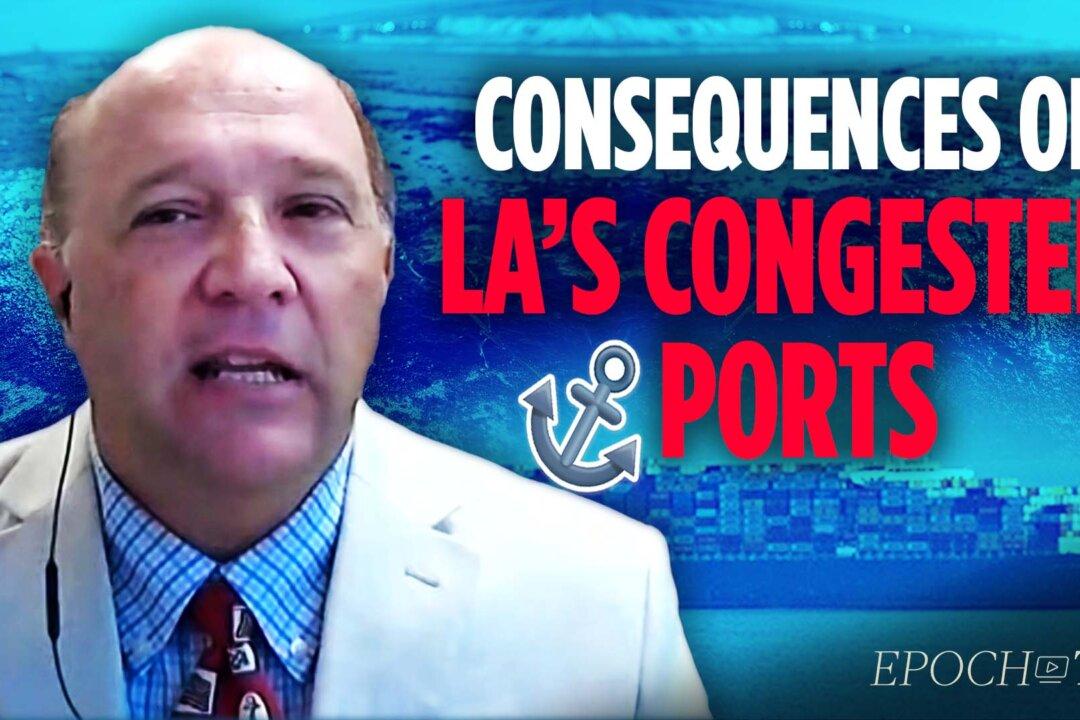The program begins with a report on the number of ships currently waiting in the ports. This has already caused one oil spill, as there are an estimated 70 ships with as many as half a million containers that need to be offloaded. Mercogliano explains that the backlogs have happened in the past, but this backlog—which began from the beginning of the pandemic—is showing record-breaking numbers. Prior to COVID-19, there was already a slow-down of goods coming from China. Also, ships were coming in half full. Now with an increased demand for goods, the backlog of ships continues to create more and more demand.
Impact On Consumers
The next question from the host deals with how this backlog affects prices passed on to the consumer. Marcogliano advises that normally it costs $1,500 to ship a container. The cost of the shipping is divided out and added to the price of the goods. Now the cost of shipping a container has increased ten fold, which increases the cost of the goods. He gives the example of the sale of sneakers. The average cost to ship a pair of sneakers was 12 cents. This has increased to 1.20, which along with increased demand drives up the price of the sneakers. He said shipping costs will probably not fall again to the levels they were pre-COVID-19, which is going to create a situation of ongoing inflation.In addition, the concept of oceanic shipping requires that ships keep moving—which is how they make their money. When there are backlogs like we are experiencing now, the ships are anchored and burning fuel—they are unable to drop their loads and return for another load. While waiting to be loaded onto a truck or train, a rental fee is charged to store the container, which gets higher the longer it stays on the dock. Incurring these costs increases the freight rate, which drives up the overall shipping cost. A merchant can request expedited shipping but that costs extra. All of these things have to be taken into consideration when determining the cost of the goods, which is passed on to the consumer.
There’s another reason for the transport delays at these ports and that is the shortage of chassis. The chassis is the frame on the back of the truck where the containers sit. There is now an increased demand for these, making it very difficult to get them. As a result, when the truck driver shows up to the dock, there is no chassis to pull the container. According to Marcogliano, these factors are going to affect the economy in a couple of different ways. First of all, while we are not going to run out of goods, what we are going to see is less of a selection than we had before. The other factor is inflation due to the increased demand and decreased supply.
- Slow down the system. For example, there are only a set amount of shipping containers in the world. Right now, empty containers are being shipped to companies who need them to ship their goods. If the containers were shipped with American exports instead of being empty this would slow down the amount of goods being shipped here because it would take time to unload those containers.
- The Federal Maritime Commission needs to have more jurisdiction to monitor the shipping container monopolies that control the import and export of our goods.
- The LA and Long Beach ports are the only ports right now that can handle these big ships. We need more ports up and down the coast that can handle some of these ships and keep backlogs from happening.
The program ends with Marcogliano talking about the shutdowns that are happening because of COVID-19. One thing that did not shut down was international shipping. Many of the workers that work in this industry come from economically disadvantaged areas. During the pandemic, many countries did not allow workers to get off the ships, so mariners stayed on the ships for much longer than normal—sometimes for over a year. The consequences of this are more accidents happening and many workers will not return to work once they are able to get off the ship, leading to a shortage of workers in the maritime shipping industry. That along with production slowdowns in China could potentially mean that instead of backlogs of ships, no ships would arrive with goods. It is this scenario that would be the most disastrous.
Consumers should take measures now to prepare themselves for these disruptions, which will likely continue in the foreseeable future.





